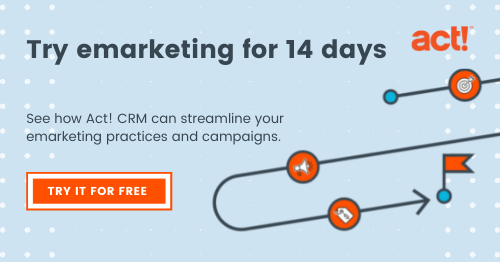
Why doesn’t email just work?
We are used to personal email being pretty reliable and email deliverability won’t even cross your mind when sending a single email to a friend or family member. Comparatively, reaching an inbox with a high volume marketing email has a few more dependencies:
- While powerful marketing automation can expand your reach exponentially, the potential to damage your sender reputation expands as well. This means anti-spam mechanisms tend to have a much higher impact on marketing email. It’s like how owning a sports car may increase your potential for speeding tickets – all that power comes with responsibility.
- More elaborate marketing strategies have become easier to operationalize thanks to automation, but increasing complexity in any system will add potential points of failure.
- Email configuration items, like authentication, are 100% handled for free email accounts, but has to be setup for your custom domain if you send through an email service provider.
- Sending at high volumes can take longer to process both on the sending and receiving side, which can be misinterpreted as a delivery issue.
- Some addresses just aren’t deliverable (fake, typo, deactivated) which you are more likely to encounter with automated address collection or an unmaintained marketing list.
All these differences increase the potential for deliverability issues. So if deliverability for marketing email is more complicated, how do you as a sender determine the actual cause? Narrow down the potential causes by determining where the sending process broke down. For most senders, having an email deliverability issue usually means “I expected an email to be sent, but it’s not in my recipients inbox”, so for practical purposes you can consider the breakdown to be in one of three places:
- The email was not actually sent (or not yet sent)
- The email was sent, but not delivered to the recipient’s mail server
- The email was delivered to the recipient’s mail server, but not placed in the recipient’s inbox
Was an email actually sent to the contact?
If you can see a delivery or bounce event for the contact in the particular campaign in question, that’s a clear indicator that your email was actually sent, and you can move on to the next question. If you can’t find evidence of a delivery or bounce, you’ll want to check a few assumptions:
- Is your contact actually included in your campaign?
- Is your campaign/automation actually set to send at the date/time you were expecting?
- Is your contact’s email address suppressed?
If everything looks correct but you have no evidence of a delivery or bounce, consider that the email could still be pending. There’s a lot going on behind the scenes so it’s appropriate to have a different set of expectations for marketing email vs single person-to-person email. Most marketing automation systems have to process huge volumes of email, which can take some time, especially during peak hours. Even if the sending server attempts to send immediately, the recipient servers have their own rate limits and outages, so for various reasons some email can be delayed for up to a few days.
Was the email delivered to the recipient’s email server?
If you have evidence of a delivery event, you can move on to the next question. If the email failed to deliver (bounced), you’ll want to investigate to see if there’s anything you can do. Bounce messages will usually contain a code that indicates why the email was not accepted, but interpreting bounce messages can be tricky. There is a standard set of bounce codes, but not all recipient email servers adhere to the standard, though major networks will often have published information on their unique bounce codes. In addition to the codes, the accompanying description should provide context, but if it’s still unclear, searching the net for phrasing from the codes (leaving out any unique information like the sender/recipient address or your sending IP) will usually help to decipher them.
Below are some common bounce messages that provide actionable insight. Note that these are just examples, the actual wording can vary widely depending on the recipient server.
Authentication Issues
- 550 Message rejected due to senders DMARC policy
- 550 The sender did not meet Sender Policy Framework rules
- Check your SPF/DKIM/DMARC configuration.
Poor Sender Reputation
- 554 Refused. Your domain name is blacklisted.
- 554 5.7.1 Blocked due to domain reputation: Rejected
Spam Content
- 554 5.7.1 [P4] Message blocked due to spam content in the message.
- 552 A URL contained in this message is blacklisted by Spamhaus DBL.
- Check your content for spam keywords.
- Remove blacklisted links, or if you own the link, repair its reputation.
Recipient Side Issues
- 552 5.2.2 User’s mailbox is full
- 550 5.7.0 This email was sent to an inactive account. Please visit the company website for current contact information.
- 550-5.1.1 The email account that you tried to reach does not exist. Please try double-checking the recipient’s email address for typos or unnecessary spaces.
- Contact recipient if possible
- Verify address is correct
- In most cases, these are addresses that you probably should not be sending to. If you have excessive amounts of mailbox full or invalid addresses on your list, you’ll need to evaluate your lead generation practices, especially permission.
Through our experience with personal email we’ve come to expect email to work right away, every time, but this doesn’t hold true for high volumes of marketing email. Some types of bounces are normal shouldn’t be considered a problem unless you’re seeing them in high volumes.
Temporary/Normal
- 451 Temporary local problem – please try later
- 452 4.4.5 Insufficient disk space; try again later
- 421 4.4.0 No mail servers for this domain could be reached at this time
- 454 4.4.4 No MX or A for domain
- These issues will most likely resolve themselves, but for those that don’t (e.g. the mail server never existed) you’ll want to remove the addresses as part of your routine list maintenance.
Was the email delivered, but not placed in the inbox?
Since this decision happens on the recipient side and after “delivery”, we usually don’t have any information which makes it harder to determine the root cause. Look at bounce messages from the same campaign for any indication of a systemic issue, as some recipient servers will reject (bounce) an email for the same reason that others will junk it. Without any useful information, the best approach is to address each of the potential causes:
Spam content
- Check spam keywords and link reputation.
Authentication
- Check your SPF/DKIM/DMARC configuration, especially if email sent to your own domain is going to junk.
- Your own email server will generally assume that unauthenticated email coming “from” you isn’t actually from you.
Manual filter / inbox provider personalized filter
- The recipient could have a manual filter setup, or their provider may automatically filter based on recipient engagement with your mail (or similar mail).
- Sending engaging email that your recipients want to receive is critical to inbox placement, even if you use email marketing best practices and your sender reputation is otherwise in good shape.
Sender reputation
- This is the big one, and most likely the cause if your authentication, content, etc. checks out.
- Sender reputation factors and spam filtering systems are continually evolving, so even (or especially) if your marketing methods have worked well in the past, you’ll want to make sure your knowledge of sender reputation is up to date.
- Make sure you understand sender reputation and industry standard best practices, then proceed to repair your reputation.
Out of band bounces
- While uncommon, there are cases where a message can be accepted by the recipient server, then sent back as an “out of band” bounce (basically “oops, I can’t deliver that message after all”).
- You may see both a delivery and a bounce event for the same email in this case.
The Cumulative Effect
Deliverability factors can be additive, meaning that while some minor problems may not solely inhibit delivery, they may do so if they occur in conjunction with other problems. Keep in mind that there could be multiple causes, so the best approach is to make sure everything is tip top – don’t ignore the potential impact of seemingly minor problems.






